Employee Intranet Portal: Key Benefits and Features
Learn why an employee intranet portal is essential for modern businesses. From seamless communication to stronger engagement—empower your teams to thrive.
On this page
- What is an employee intranet portal?
- Examples of intranet: How leading companies are utilizing intranets
- Benefits of an employee intranet portal
- Key features of an employee intranet portal
- Steps to implement an employee intranet portal
- Transform your workplace with Empuls' employee intranet portal
- Empuls personas and value delivered
- Case studies
- Integration capabilities
- Conclusion
- FAQs
Effective internal communication and collaboration are key to a successful business. Companies need efficient ways to connect their teams, streamline operations, and ensure that everyone has easy access to essential information. An employee intranet portal is a powerful tool that can make this happen.
But what exactly is an employee intranet portal, and how can it benefit your organization?
In this blog will we will explore the various advantages of using an intranet portal, the key features to look for, steps to set one up, and best practices to get the most out of it. By the end, you will see how an employee intranet portal can become a central part of your company's communication strategy.
What is an employee intranet portal?
An employee intranet portal is a private network accessible only to a company's staff. It serves as a central hub for communication, collaboration, and information sharing within the organization.
Think of it as a digital workplace where employees can find company news, access important documents, collaborate on projects, and connect with colleagues. The primary purpose of an intranet portal is to streamline internal processes and improve communication across the company. It provides a single platform where employees can easily access the tools and information they need to perform their jobs efficiently.
Whether it’s finding a company policy, submitting a leave request, or participating in a team discussion, the intranet portal makes these tasks simpler and faster.
Examples of intranet: How leading companies are utilizing intranets
Several organizations across industries have implemented highly effective intranets that serve as models for other businesses. Below are some of the best intranet examples that showcase how this technology can transform internal operations.
1. Empuls: A modern employee engagement intranet
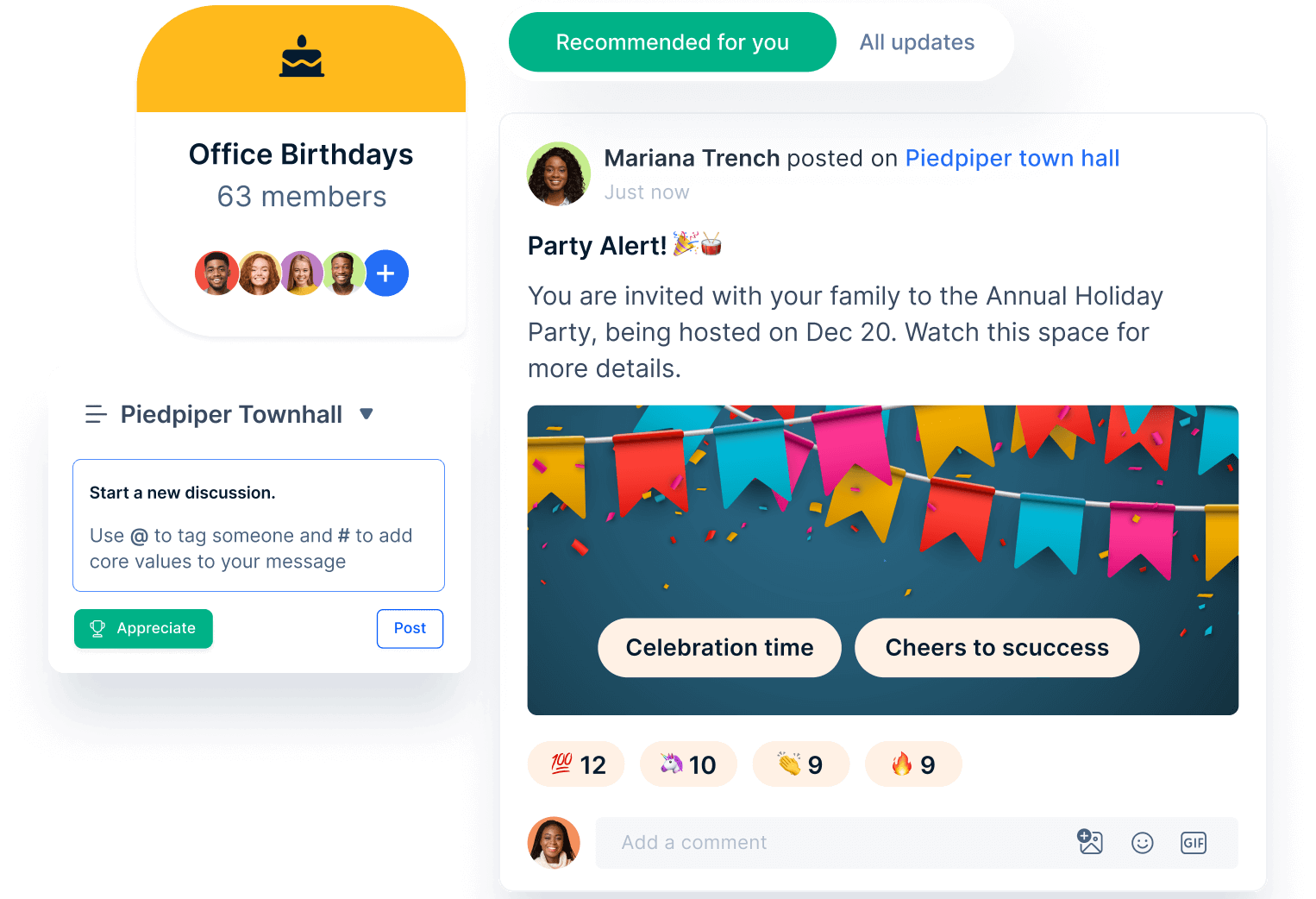
Empuls stands out as a robust social intranet solution, offering a variety of features designed to enhance employee engagement and communication within organizations. Here are several key reasons why Empuls is considered an effective social intranet.
Why it works:
- Improved communication and collaboration: Empuls centralizes company information, enabling quick access to announcements and updates, which enhances internal communication. It also facilitates collaboration through tools for document sharing and team discussions, allowing employees to work together seamlessly regardless of location12.
- Employee engagement through social interactions: The platform promotes a sense of community by integrating social features such as recognition programs, polls, and interactive content like videos and quizzes. This fosters engagement and encourages employees to participate actively in discussions and initiatives13.
- Centralized information hub: Empuls acts as a single source of truth for company policies and resources, reducing confusion and saving time for employees. This centralized approach ensures everyone is aligned with the organization's goals and values14.
- Recognition and rewards: The social intranet includes automated recognition systems that celebrate employee achievements, motivate staff, and reinforce a culture of appreciation. This not only boosts morale but also strengthens workplace connections.
Empuls is utilized by companies like Brenntag, ANCA, and Luminous, demonstrating its effectiveness in enhancing communication, boosting morale, and increasing overall engagement. By focusing on employee experience, Empuls helps organizations create a more connected and motivated workforce.
2. Microsoft SharePoint: A versatile solution for large enterprises
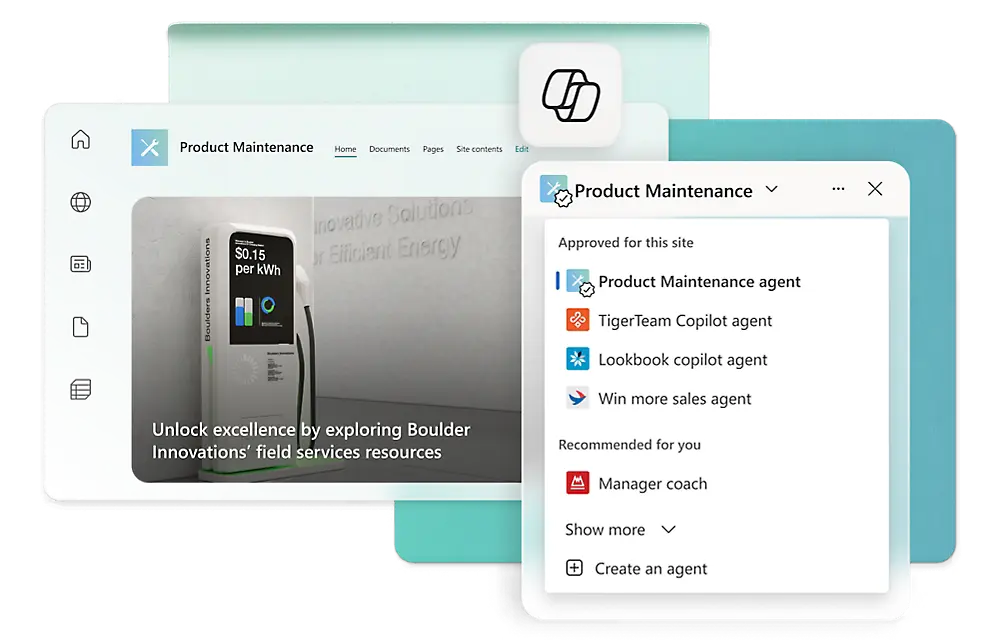
When discussing intranet examples, Microsoft SharePoint often tops the list. SharePoint is one of the most popular intranet platforms companies of all sizes use. It provides many features, from document management to collaboration tools, making it a highly versatile solution.
Why it works:
- Customizability: SharePoint is easily customizable to suit an organization's specific needs, allowing businesses to create a user-friendly interface tailored to their workflows.
- Integration: It integrates seamlessly with other Microsoft products, such as Outlook and Teams, enabling a cohesive workflow across various applications.
- Security features: SharePoint offers advanced security features, ensuring sensitive company data is well-protected from unauthorized access.
Large enterprises widely use this intranet example due to its flexibility and scalability. Companies like Coca-Cola and NASA have adopted SharePoint to foster better collaboration and streamline document sharing across departments.
3. Slack: A communication-first intranet
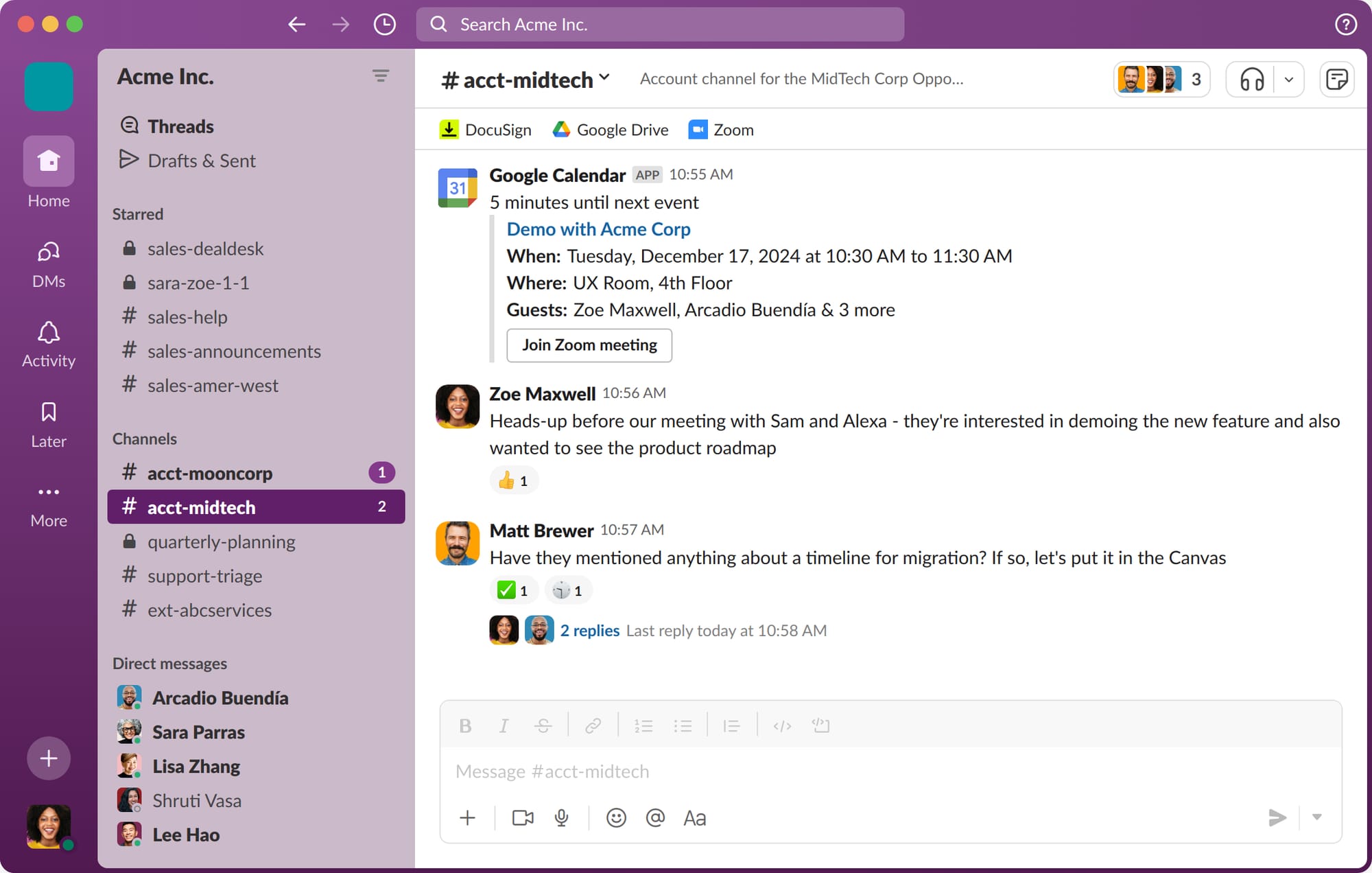
While Slack is often considered a messaging app, many businesses use it as their primary intranet platform due to its robust communication features. Slack is a great intranet example for companies prioritizing real-time communication and collaboration.
Why it works:
- Channel organization: Slack channels can be created for specific teams, projects, or topics, ensuring that conversations are organized and easy to navigate.
- Integration capabilities: It integrates with hundreds of other apps, such as Google Drive and Asana, to enhance productivity and centralize tools in one place.
- Search functionality: Slack’s powerful search function lets employees find files, messages, and conversations quickly, reducing wasted time.
While Slack may not have all the document management features of traditional intranet platforms, its real-time communication tools make it an ideal solution for smaller companies or those with remote teams.
4. Unily: A people-centric intranet platform
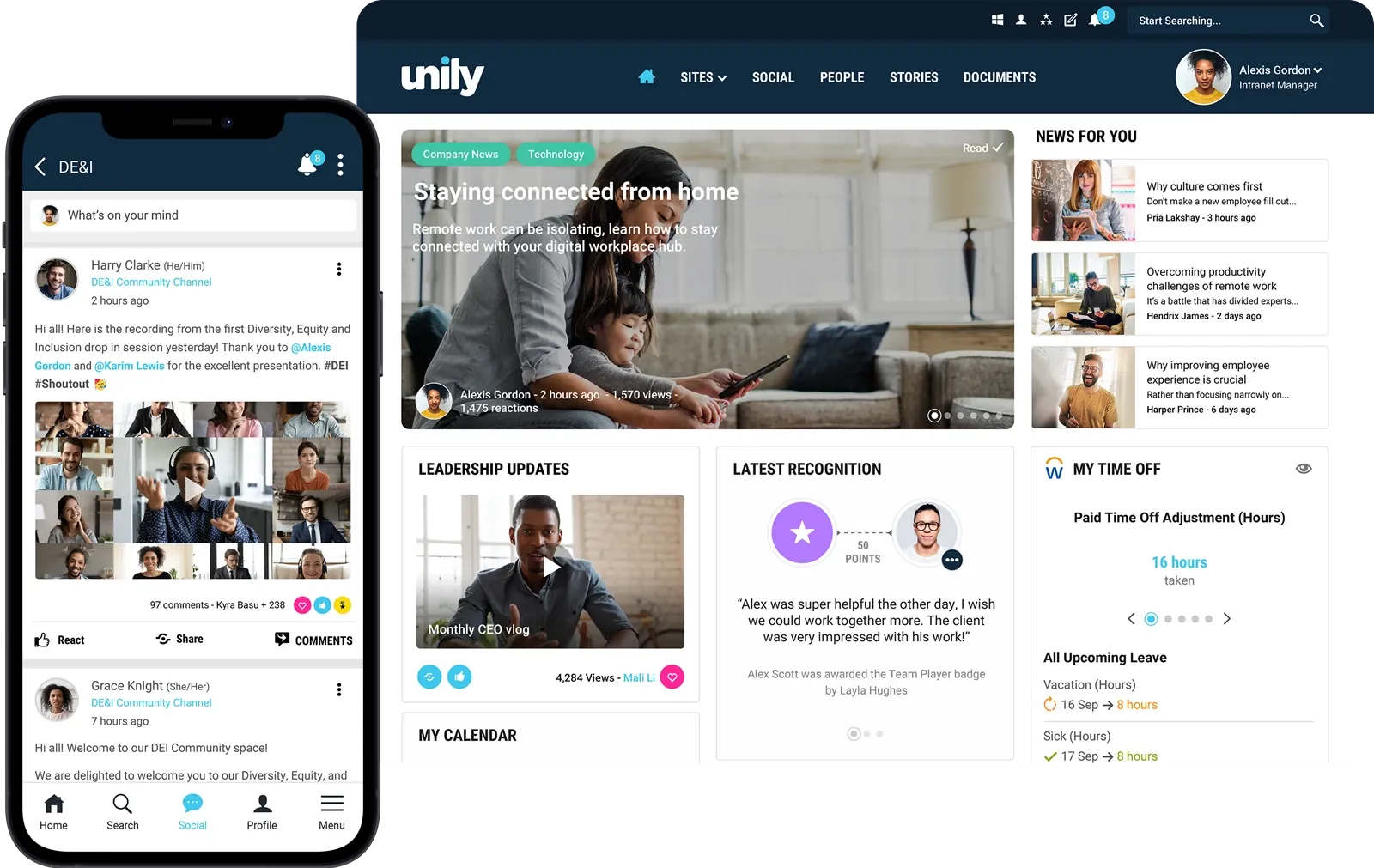
Unily is a modern digital workplace platform combining the best features of traditional intranets with advanced employee engagement tools. This intranet example is particularly notable for its focus on improving employee experience and fostering a culture of collaboration.
Why it works:
- Customization: Unily is highly customizable, allowing organizations to design an intranet that reflects their brand and culture.
- Personalized dashboards: It provides personalized dashboards for employees, making accessing the information and tools they need easier.
- Advanced analytics: Unily’s advanced analytics features allow businesses to track how employees interact with the intranet, providing valuable insights into engagement and usage patterns.
Unily is used by major brands such as Shell and McDonald's to enhance employee communication, engagement, and knowledge sharing. Its flexibility makes it a great option for both small businesses and large corporations looking to build a modern, people-first intranet experience.
Benefits of an employee intranet portal
An employee intranet portal offers numerous advantages that can transform the way your organization operates. From improving communication to enhancing employee engagement, here are some key benefits:
- Improved communication: An intranet portal enhances internal communication by providing a platform for company-wide announcements, news, and updates. It ensures that all employees are on the same page and can access important information quickly.
- Enhanced collaboration: With tools for document sharing, project management, and team discussions, an intranet portal makes collaboration easier. Employees can work together more effectively, regardless of their physical location.
- Centralized information: The intranet portal acts as a single source of truth for company policies, procedures, and resources. Employees no longer need to search through multiple channels to find what they need, saving time and reducing frustration.
- Employee engagement: Features like social interactions, recognition systems, and feedback mechanisms can boost employee engagement. An intranet portal can create a sense of community and belonging within the company.
- Streamlined processes: Automation tools and self-service options within the intranet portal can simplify workflows. Employees can complete tasks like submitting forms or requesting time off without the need for manual intervention, making processes more efficient.
Key features of an employee intranet portal
An effective employee intranet portal comes with a range of features designed to enhance communication, collaboration, and productivity. Here are some essential features to look for:
- User-friendly interface: A good intranet portal should be intuitive and easy to navigate. Employees should find it simple to locate information and perform tasks without extensive training or technical knowledge. A clean and organized layout enhances the user experience and encourages regular use.
- Document management: Efficient document storage and sharing capabilities are crucial. The portal should allow employees to upload, share, and access documents easily, ensuring that everyone has access to the most current information. Advanced search functions and version control can further streamline document management.
- Communication tools: Features like chat, forums, and news feeds enhance communication within the organization. These tools facilitate real-time conversations, group discussions, and company-wide announcements, keeping everyone informed and connected. This ensures that important information is disseminated quickly and effectively.
- Integration capabilities: The ability to integrate with other business applications and tools is essential. This ensures that the intranet portal can work seamlessly with existing systems, such as email, calendars, project management tools, and HR software, enhancing overall productivity and reducing the need to switch between platforms.
- Customization options: An effective intranet portal should be customizable to fit the specific needs and branding of the company. This includes the ability to tailor the layout, design, and functionalities to align with the company’s unique requirements and corporate identity, creating a more personalized and engaging experience for employees.
- Security features: Ensuring data security and user permissions is vital. The intranet portal should have robust security measures like CSPM in place to protect sensitive information and control access based on user roles. Features like encrypted communication, multi-factor authentication, and access controls help safeguard company data and ensure compliance with privacy regulations.
Steps to implement an employee intranet portal
Setting up an employee intranet portal requires careful planning and execution. Here are the key steps to ensure a successful implementation:
Step 1: Assess needs and set goals
Begin by identifying the specific needs and objectives of your organization. Determine what you want to achieve with the intranet portal, such as improving communication, enhancing collaboration, or centralizing information. Clear goals will guide the development process and ensure that the portal meets your organization’s requirements.
Step 2: Choose the right platform
Research and evaluate different intranet solutions to find the one that best fits your company’s needs. Consider factors such as ease of use, scalability, integration capabilities, and cost. Selecting the right platform is crucial for long-term success and user adoption.
Step 3: Design and customize
Customize the portal’s design and features to align with your company’s branding and specific requirements. This includes setting up the layout, adding company logos and colors, and configuring functionalities to match your workflows. A well-designed portal enhances the user experience and encourages regular use.
Step 4: Content development
Create and organize content that will be available on the intranet portal. This includes company policies, procedures, news, announcements, and other essential documents. Ensure that the content is well-structured and easy to find, as this will help employees quickly access the information they need.
Step 5: User training and onboarding
Provide comprehensive training to employees to ensure they can effectively use the intranet portal. This can include training sessions, user manuals, and help resources. Proper onboarding is essential for maximizing the portal’s adoption and effectiveness.
Step 6: Launch and promote
Introduce the portal to employees and encourage its use through promotions and incentives. Highlight the key benefits and features to get everyone excited about the new tool. A successful launch sets the stage for widespread adoption and engagement.
Step 7: Monitor and improve
Continuously gather feedback from users and monitor the portal’s performance. Use this feedback to make necessary improvements and updates. Regularly reviewing and enhancing the intranet portal ensures that it remains relevant and valuable to employees.
Transform your workplace with Empuls' employee intranet portal
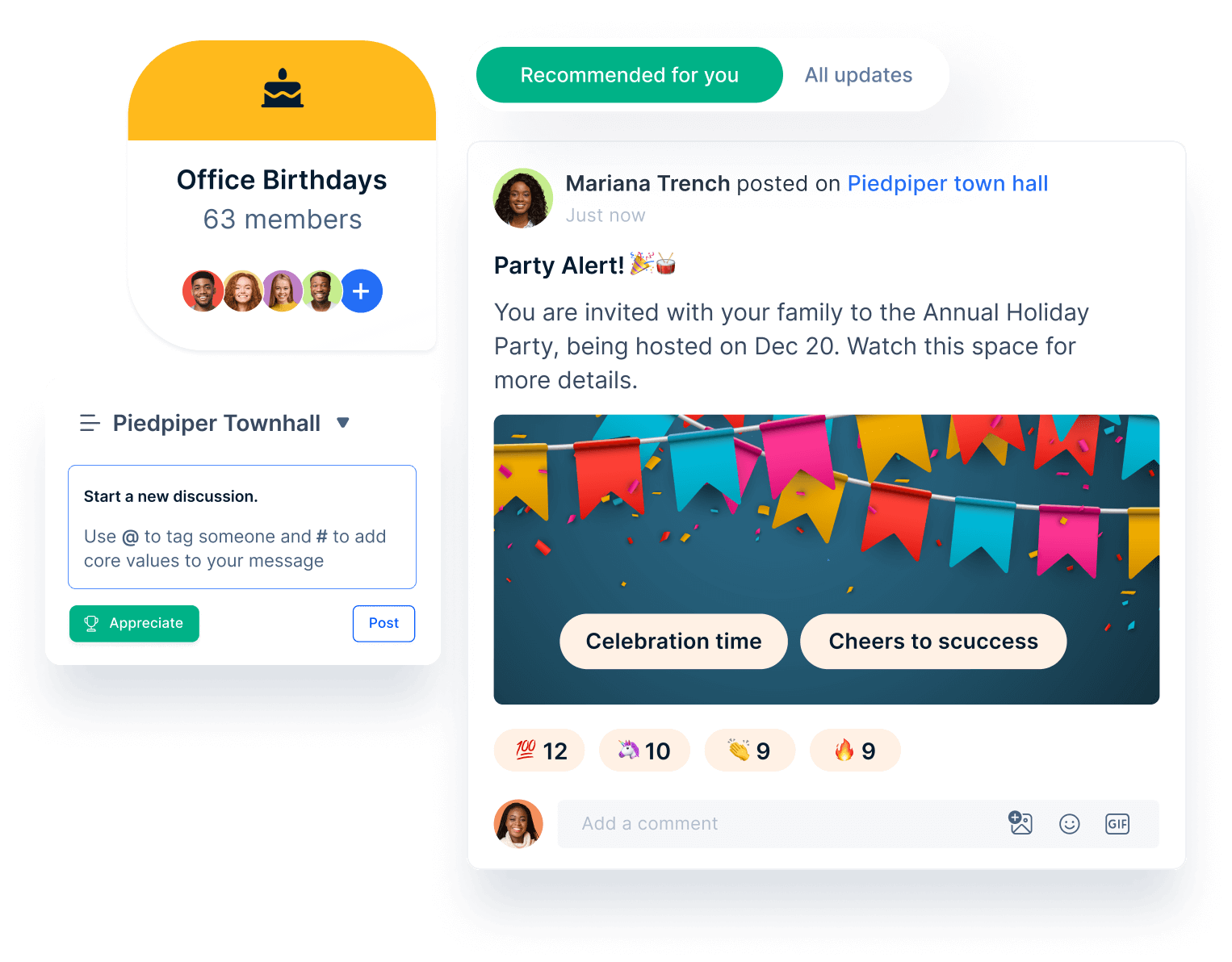
Empuls' employee intranet portal brings your entire workforce onto a common forum, fostering a sense of connectedness and belonging. Imagine a digital workplace where internal communication is seamless, updates are timely, and dialogue is open and honest.
With Empuls, you can unite your team with a single source of truth, centralizing information to conquer confusion and drive collective success. Empuls addresses real-world internal communication and engagement needs across the organization.
Empuls also helps align everyone with your company culture. Share news, engage employees, and communicate how everyone contributes to the vision. Interactive tools like town hall meetings, Wishboards, and Org Charts make collaboration easy and effective. Create engaging content with posts, polls, quizzes, videos, and Ask-Me-Anything sessions to keep everyone informed and involved.
Empuls personas and value delivered
See how each stakeholder benefits from Empuls tailored to their goals and responsibilities.
1. HR & internal communications teams
Empuls helps streamline communication, boost engagement, and reinforce culture.
- Unified comms hub with posts, videos, and updates
- Templates for automated wishes, recognition, and surveys
- Analytics for engagement, feedback, and adoption
2. People managers
Empuls gives managers tools to stay connected, recognize, and motivate their teams.
- Smart AI nudges for timely recognition
- Insights on recognition frequency across teams
- Org charts and quick team discovery tools
3. Employees
Empuls offers employees a connected, engaging digital workplace experience.
- Personalized news feeds and social interactions
- Join or create community groups
- Access to recognition, rewards, and updates
4. Leadership and CXOs
Empuls supports leadership in communicating vision and tracking engagement impact.
- Run AMAs and share vision updates
- Measure impact with eNPS, retention, and participation data
- Reinforce values with branded content and townhalls
Learn more about how Empuls can align, engage, and connect your team to drive results.
Case studies
Following are two case studies that showcase the significance of employee intranet portals.
1. Empowering Gulf Taleed’s workforce with Empuls employee intranet poits
Georges Chalouhi, Executive Manager at Gulf Taleed, faced a unique challenge: how to leverage technology to align employees with Gulf Taleed’s core cultural values while simultaneously driving employee engagement and retention. In a bid to address these challenges, he sought to:
- Attracting and retaining local talent: Meeting the Saudi Arabian Government’s mandate of having 30% of the workforce from the local population required an innovative approach.
- Deliver a consistent and unbiased recognition experience: Gulf Taleed’s centralized recognition program, “Rockstars,” needed a fresh perspective to generate a positive response from employees.
- Create a people-first culture: Aligning Gulf Taleed’s employees with the company’s core values and strategically improving engagement were at the forefront of this initiative.
The solution
To tackle these challenges, Gulf Taleed turned to Empuls, a comprehensive employee engagement platform designed to streamline communication, rewards, and recognition, all while reinforcing the company's values.
Empuls transformed Gulf Taleed’s approach to employee engagement, fostering a people-first culture that not only connected employees but also aligned them with the company’s core values. Empuls became the central hub for employee communication, feedback, celebration, and engagement.
- Connecting Gulf Taleed’s workforce with Empuls employee intranet portal
Gulf Taleed leveraged Empuls as their social intranet, which perfectly mirrored their values of diversity and inclusion. Empuls provided an open forum where employees could share their views and cultural perspectives, thereby fostering a more inclusive work environment.
The shift from email-only communication to inter-team networking was seamless. Gulf Taleed used Empuls to share news, updates, business highlights, company announcements, customer wins, and success stories, effectively connecting employees and reinforcing the company’s cultural values.
- Capturing employee voice with Empuls surveys
Gulf Taleed utilized Empuls’ engagement surveys to gain insights into the relationship between recognition, engagement, and retention. The new joiner surveys offered fresh perspectives on the company’s culture, ensuring that the voice of every employee was heard.
The effectiveness of Empuls was evident in the response rates; an engagement survey conducted via Empuls saw a 70% completion rate within just seven days of its launch, demonstrating the platform's impact on employee engagement.
- Celebrating successes with Empuls recognition and rewards
Empuls revolutionized Gulf Taleed’s recognition and rewards (R&R) program, “Rockstars.” The platform’s unique recognition experience enabled Gulf Taleed to decentralize its R&R program, remove bias, and make recognition a powerful tool for motivation.
With peer-to-peer recognition, multiple award categories, customizable reward workflows, and a global rewards catalog, Empuls empowered every employee to acknowledge great work in real-time. This transformation led to a dramatic increase in employee recognition, from three awards per quarter to 300 appreciations within six months.
The ROI of investing in employee engagement
The results of adopting Empuls were striking. Georges Chalouhi remarked, “Empuls adoption is gaining momentum, and the engagement levels are high. There has been a positive impact on team retention, morale, motivation, job efficiency, empowerment, and appreciation.” Key metrics include:
- 90% active adoption of Empuls by employees.
- 70% survey completion rate within seven days.
- 300+ peer recognitions in six months.
- 91.58% reaction rate on over 550 posts on the town hall.
With such positive outcomes, Gulf Taleed plans to maintain this momentum, using Empuls to continually highlight the importance of recognition and to celebrate the achievements and successes of their employees.
2. Enhancing transparency in employee R&R with Empuls’s social intranet software
Brenntag, a global leader in chemical distribution, needed a robust solution to enhance transparency and engagement in their employee rewards and recognition (R&R) processes. Led by Nidhi Verma, HR Manager, HR Information Centre - Asia Pacific, Brenntag implemented Empuls, transforming their R&R initiatives and creating a more transparent and engaging workplace.
The challenge
Brenntag's previous manual rewards system faced several issues:
- Manual procurement and tracking: Inefficient and delayed reward distribution.
- Intermittent engagement: Sporadic activities lacking cohesion.
- Transparency issues: Limited understanding of reward criteria, causing dissatisfaction.
The solution
Empuls provided a comprehensive and user-friendly platform that significantly improved the R&R process:
- Transparency: Empuls created a clear and transparent R&R process. Employees could easily understand the criteria for rewards, and public recognition made achievements visible to all, fostering trust and engagement.
- Automation: The platform's rewards automation feature drastically reduced the time required to track and disseminate rewards. Events like birthdays and work anniversaries were automatically identified, and employees received predesignated points, streamlining the process and reducing HR overheads.
- Comprehensive engagement: Empuls offered an end-to-end solution for Brenntag’s engagement needs. The feeds and announcements feature facilitated quick communication, while the extensive rewards catalog provided employees with diverse redemption options. This comprehensive approach met all of Brenntag’s engagement requirements.
- Social appreciation: Empuls’ social intranet features enabled social appreciation. Employees could publicly acknowledge and celebrate each other’s achievements, fostering a positive and interactive environment. Special events like birthdays became opportunities for mutual appreciation and engagement.
Impact
Empuls delivered several key benefits to Brenntag:
- Reduced HR and admin effort: Automation and a user-friendly interface decreased the administrative burden on HR.
- Enhanced transparency: Clear rewards criteria and public recognition improved transparency and trust among employees.
- Increased engagement: The interactive platform and comprehensive rewards options boosted overall employee engagement.
Integration capabilities
Empuls integrates with your ecosystem for a seamless digital workplace experience.
Implementation and customization
Empuls is quick to set up, easy to brand, and highly secure by design.
- White-labeled design: logo, colors, time zone, brand language
- Fast setup with guided onboarding and user provisioning
- Compliance: GDPR, ISO 27001, SOC 2, HIPAA, WCAG
- Advanced security: VAPT, MFA, encryption, audit logs
Conclusion
An employee intranet portal is more than just a digital workspace; it's a vital tool for enhancing communication, collaboration, and productivity within your organization. By centralizing information, streamlining processes, and engaging employees, an intranet portal can transform the way your company operates.
Implementing an intranet portal involves assessing your needs, choosing the right platform, customizing the design, developing content, training users, and continuously improving the system. With careful planning and execution, your intranet portal can become a cornerstone of your company's internal communication strategy.
Investing in an employee intranet portal is a step toward a more connected, efficient, and engaged workforce. It’s time to bring your team together and empower them with the tools they need to succeed.
Empuls can significantly enhance the functionality and effectiveness of an employee intranet portal by providing features that align with the goals of improving communication, collaboration, and productivity within an organization. Schedule a call with the experts at Empuls.
FAQs
1. What are the typical costs associated with setting up an employee intranet portal?
The costs can vary depending on the platform chosen, customization needs, and additional features. It can range from a few hundred to several thousand dollars.
2. How long does it take to implement an intranet portal?
Implementation time can vary based on the complexity of the portal and the size of the organization, but typically it takes a few weeks to a few months.
3. Can small businesses benefit from an intranet portal?
Absolutely. Intranet portals can streamline communication and collaboration for businesses of all sizes, providing a centralized platform for information and resources.
4. What are the common challenges faced during intranet portal implementation?
Challenges can include user resistance, technical issues, integration with existing systems, and ensuring content is kept up-to-date.
5. How do we measure the success of our intranet portal?
Success can be measured through user engagement metrics, feedback surveys, and improvements in communication and productivity.
6. Can we integrate third-party applications with our intranet portal?
Yes, most modern intranet portals offer integration capabilities with a variety of third-party applications and tools.
7. What kind of support is typically available for intranet portals?
Support can include online help resources, user manuals, training sessions, and customer service from the platform provider.
8. How can we ensure that our intranet portal is secure?
Ensuring security involves implementing strong access controls, using encrypted communications, regularly updating the software, and educating employees about security best practices.
9. Is it possible to customize the intranet portal after it has been launched?
Yes, most intranet portals offer ongoing customization options to adapt to changing needs and requirements.
10. How can we encourage employees to use the intranet portal regularly?
Regular use can be encouraged by promoting the benefits, offering training, incorporating user-friendly features, and continuously updating content to keep it relevant and engaging.


















